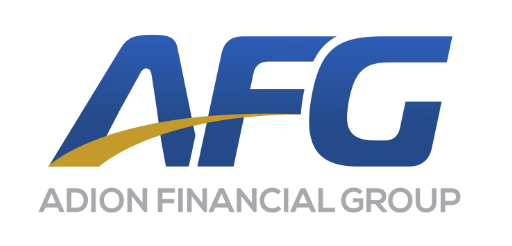
Top 3 Recommended Policies
Non-Emergency Medical Transportation (NEMT) services are an essential component of healthcare accessibility, especially in urban and suburban areas of Connecticut. These services ensure that patients can attend medical appointments, receive treatments, and maintain their health without the stress of transportation barriers. For NEMT businesses operating within Connecticut’s urban and suburban routes, understanding the nuances of insurance coverage is crucial—not only for compliance but also for protecting their operations, employees, and clients.
With the NEMT market projected to grow from $16.2 billion in 2024 to $24.3 billion by 2030, fueled by a shift toward value-based care partnerships, Connecticut’s local NEMT providers are positioned in a dynamic and expanding industry. However, navigating the insurance landscape requires careful attention to the state’s unique regulatory environment, healthcare cost trends, and the challenges faced by small businesses in the region. This comprehensive guide will explore everything you need to know about insurance for Connecticut’s urban and suburban NEMT businesses, helping operators safeguard their ventures while contributing to the state’s evolving healthcare ecosystem.
Understanding the Importance of Insurance for Connecticut NEMT Businesses
Insurance is a fundamental pillar for any transportation business, but it is especially critical in the NEMT sector due to the vulnerable nature of the clientele and the regulatory requirements involved. NEMT providers transport patients who may have mobility challenges, chronic health conditions, or require specialized care during transit. As such, the risks associated with liability, vehicle operation, and patient safety are heightened. The stakes are high; a single incident can lead to significant financial repercussions, not to mention the potential impact on the well-being of the patients being transported. Therefore, having a robust insurance plan is not just a legal obligation but a moral imperative for NEMT businesses.
Connecticut’s small businesses, including NEMT providers, face increasing financial pressures, particularly when it comes to healthcare and insurance costs. According to Andy Markowski, NFIB Connecticut State Director, “Continuously rising health insurance costs are a significant burden for Connecticut’s small businesses.” This reality underscores the importance of securing the right insurance coverage to mitigate risks without overextending financially. Additionally, NEMT providers must navigate a complex landscape of state regulations and compliance requirements, which can vary significantly across municipalities. This complexity often necessitates specialized legal and insurance expertise to ensure that businesses remain compliant while also protecting their financial interests.
Moreover, with only 30% of small businesses in Connecticut currently offering health insurance—a steep decline from nearly 50% in 2000—it’s clear that affordability is a pressing concern in the state’s business community. For NEMT companies, balancing operational costs with comprehensive insurance coverage requires strategic planning and informed decision-making. This report from NFIB highlights the growing challenges small businesses face in this area. The decline in health insurance offerings can also lead to higher turnover rates, which is particularly detrimental in the NEMT sector where experienced drivers are crucial for maintaining service quality and patient safety. Investing in employee health benefits could be a strategic move to enhance loyalty and reduce recruitment costs in the long run.
Key Insurance Types for NEMT Businesses
Several types of insurance are vital for NEMT providers operating in Connecticut’s urban and suburban areas:
- Commercial Auto Insurance: Covers vehicles used for transporting patients, protecting against accidents, damages, and liability claims. This type of insurance is particularly important given the high volume of traffic in urban areas, where the likelihood of accidents increases.
- General Liability Insurance: Provides coverage for bodily injury, property damage, and personal injury claims arising from business operations. This insurance acts as a safety net, ensuring that businesses can cover unexpected legal costs that may arise from incidents involving clients or third parties.
- Professional Liability Insurance: Also known as errors and omissions insurance, it protects against claims of negligence or inadequate service. In the sensitive context of patient transportation, even minor oversights can lead to serious consequences, making this coverage essential.
- Workers’ Compensation Insurance: Mandatory in Connecticut for businesses with employees, this covers medical expenses and lost wages for work-related injuries. Given the physical demands placed on NEMT drivers, this insurance is crucial for safeguarding both employees and the business.
- Health Insurance for Employees:
While costly, offering health insurance can improve employee retention and satisfaction, which is critical in a labor-intensive industry like NEMT. Moreover, a healthy workforce can lead to fewer sick days and higher productivity, ultimately benefiting the bottom line.

Connecticut’s Healthcare Cost Trends and Their Impact on NEMT Insurance
Healthcare costs in Connecticut have been rising steadily, increasing by an average of 4.8% annually over the past two decades. This growth rate surpasses both inflation and wage increases, placing additional strain on businesses that provide health-related services or employee health benefits. Healthcare Value Hub’s analysis sheds light on these persistent cost pressures. The implications of these rising costs extend beyond immediate financial concerns; they also affect the accessibility and quality of care that residents receive. As healthcare providers grapple with these increasing expenses, there is a growing concern that essential services may become less available, particularly for vulnerable populations who rely heavily on non-emergency medical transportation (NEMT) to access necessary treatments.
For NEMT businesses, these rising costs translate into higher insurance premiums, both for health insurance offered to employees and for liability coverage related to medical transportation. The increased financial burden can be particularly challenging for small to mid-sized operators who often operate on thin margins. As these businesses navigate the complexities of the healthcare landscape, they may also face challenges in maintaining their fleet and ensuring compliance with safety regulations, which can further drive up operational costs. Additionally, the need for specialized training for drivers to handle various medical needs adds another layer of expense, compounding the financial pressures on these essential service providers.
Furthermore, the decline in the percentage of small businesses offering health insurance—from nearly 50% in 2000 to just 30% today—reflects the broader affordability crisis in the state. This trend may influence NEMT companies’ decisions about employee benefits, potentially impacting recruitment and retention in a sector that relies heavily on dependable, trained drivers and support staff. The ability to offer competitive benefits is crucial for attracting talent in an industry where employee turnover can significantly affect service continuity and quality. As the demand for NEMT services continues to grow, particularly among an aging population and those with chronic health conditions, the pressure to maintain a skilled workforce becomes increasingly critical.
Strategies to Manage Insurance Costs
NEMT businesses can adopt several approaches to manage rising insurance costs without compromising coverage:
- Explore Captive Insurance Options: Connecticut has seen growth in captive insurance companies, with 78 captives registered as of 2023, including 25 smaller “cell” captives. Captive insurance allows businesses to pool risk and potentially reduce premiums by self-insuring certain risks. This option may be viable for larger NEMT operators or consortiums. Learn more about Connecticut’s captive insurance market. By leveraging this model, NEMT providers can gain more control over their insurance costs and tailor coverage to their specific needs, ultimately fostering a more sustainable business model.
- Partner with Value-Based Care Providers: The shift toward value-based care encourages partnerships between health systems and NEMT providers, which can open doors to shared risk arrangements and more predictable revenue streams, indirectly supporting insurance affordability. Collaborating with healthcare providers can also enhance service integration, ensuring that patients receive comprehensive care that includes reliable transportation to and from medical appointments.
- Invest in Safety and Training:
Reducing accidents and liability claims through rigorous driver training and vehicle maintenance can lead to lower insurance premiums over time. Implementing a robust safety program not only minimizes risk but also enhances the overall reputation of the NEMT provider, making them a more attractive option for both clients and insurance companies.
Regulatory Considerations and Compliance for NEMT Insurance in Connecticut
Operating an NEMT business in Connecticut requires adherence to state-specific regulations governing insurance coverage, vehicle standards, and driver qualifications. Insurance policies must meet minimum coverage requirements mandated by Connecticut law, which can differ significantly from federal standards or those in neighboring states. This includes not only liability coverage but also considerations for comprehensive and collision coverage, which can be crucial for protecting vehicles that are frequently on the road.
Commercial auto insurance is particularly scrutinized, given the passenger-carrying nature of NEMT services. Providers must ensure their policies cover all vehicles used in service and that limits are sufficient to protect against potential claims. Additionally, workers’ compensation insurance is mandatory for any business with employees, including NEMT companies. This requirement underscores the importance of safeguarding not only the passengers but also the drivers and support staff who play a vital role in the operation of these services.
Failure to comply with insurance regulations can result in fines, license suspensions, or loss of operating privileges, making it imperative for NEMT operators to maintain up-to-date and comprehensive coverage. Consulting with insurance professionals who specialize in Connecticut’s transportation and healthcare sectors can help businesses navigate these complexities effectively. Furthermore, staying informed about changes in legislation or insurance requirements is essential, as these can evolve in response to industry trends or public health needs.
Insurance and the Urban/Suburban Route Context
Urban and suburban routes in Connecticut present unique challenges and risks for NEMT providers. Traffic congestion, shorter but more frequent trips, and diverse patient needs require tailored insurance solutions. For example, urban routes may see higher exposure to vehicle damage or liability claims due to dense traffic environments, while suburban routes might involve longer distances and different risk profiles. Additionally, urban areas may have more stringent regulations regarding emissions and vehicle types, which can impact the choice of vehicles used for NEMT services.
Insurance providers often offer customized policies that reflect these route-specific risks, allowing NEMT businesses to optimize coverage and cost. Understanding these nuances is essential for operators looking to balance protection with affordability. Moreover, the demographic diversity of patients in urban versus suburban settings can lead to varying medical needs, which may necessitate specialized training for drivers and additional insurance considerations. For instance, transporting patients with mobility issues may require vehicles equipped with ramps or lifts, further influencing insurance requirements and operational costs.
The Growing NEMT Market and Insurance Opportunities in Connecticut
The global NEMT market’s projected growth at a compound annual growth rate (CAGR) of 7.0% from 2024 to 2030 signals expanding opportunities for local providers in Connecticut. This growth is driven by an aging population, increasing chronic disease prevalence, and healthcare systems’ emphasis on reducing missed appointments and improving patient outcomes. As the demand for non-emergency medical transportation (NEMT) rises, providers must adapt to meet the unique needs of diverse patient populations, including those with mobility challenges and varying levels of healthcare literacy.
Connecticut’s health and medical insurance industry is also expected to grow to $29.3 billion by 2025, reflecting broader trends in healthcare spending and insurance demand. IBISWorld’s industry report highlights this robust expansion, which bodes well for NEMT providers aligned with healthcare payers and providers. This growth is not only beneficial for existing NEMT businesses but also opens the door for new entrants looking to capitalize on the increasing need for reliable transportation services. With the right strategies, these new businesses can carve out a niche by offering specialized services tailored to the needs of specific patient demographics.
For NEMT businesses, this growth translates into more partnership opportunities with health systems seeking reliable transportation solutions as part of value-based care models. These partnerships often come with contractual insurance requirements and expectations for high service standards, making comprehensive insurance coverage not just a legal necessity but a competitive advantage. Moreover, as healthcare providers increasingly focus on patient-centered care, NEMT providers that can demonstrate their impact on reducing no-show rates and improving access to care will likely find themselves in high demand.
Future Outlook and Recommendations
As Connecticut’s NEMT market evolves, businesses should anticipate increasing insurance sophistication and regulatory scrutiny. Embracing technology for route optimization, patient tracking, and safety monitoring can reduce risks and support favorable insurance terms. The integration of telematics and real-time data analytics can enhance operational efficiency, allowing NEMT providers to adjust routes dynamically based on traffic patterns and patient needs, ultimately leading to improved service delivery.
Additionally, staying informed about state insurance innovations, such as captive insurance and collaborative risk-sharing models, can provide financial benefits and stability. Operators are encouraged to engage with industry associations and regulatory bodies to remain current on best practices and legislative changes. Networking with other providers and participating in workshops can also foster knowledge sharing and collaboration, paving the way for innovative solutions that address common challenges in the NEMT landscape. As the market continues to grow, those who proactively adapt to changing conditions will be best positioned to thrive in this competitive environment.

Conclusion: Securing the Right Insurance for Sustainable NEMT Operations
Connecticut’s local NEMT businesses serving urban and suburban routes operate at the intersection of healthcare and transportation, making insurance coverage a critical factor in their success and sustainability. Rising healthcare costs, regulatory demands, and the evolving insurance landscape present challenges, but also opportunities for savvy operators.
By understanding the specific insurance needs of NEMT services, leveraging emerging insurance models like captives, and aligning with the state’s growing healthcare and insurance sectors, Connecticut’s NEMT providers can protect their businesses, support their employees, and deliver vital services to their communities.
For those interested in the latest trends and data shaping Connecticut’s small business insurance environment,
Hartford Business offers insightful reporting on the steep decline in small business health insurance offerings, underscoring the importance of strategic insurance planning in today’s market.
Contact Us
Phone
Locations
Connecticut Location
703 Hebron Ave., 3rd Floor, Glastonbury, CT 06033
North Carolina Location
436 East 36th St., Charlotte, NC 28205


